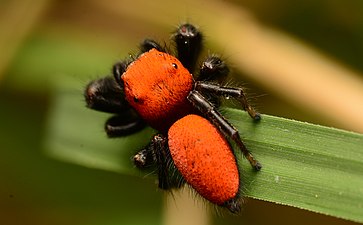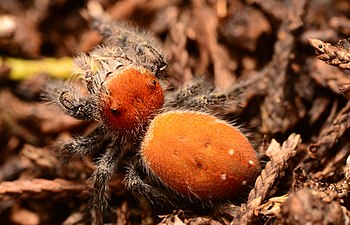| Phidippus cardinalis | |
|---|---|
 | |
| Female cardinal jumper | |
| Scientific classification | |
| Domain: | Eukaryota |
| Kingdom: | Animalia |
| Phylum: | Arthropoda |
| Subphylum: | Chelicerata |
| Class: | Arachnida |
| Order: | Araneae |
| Infraorder: | Araneomorphae |
| Family: | Salticidae |
| Subfamily: | Salticinae |
| Genus: | Phidippus |
| Species: | P. cardinalis |
| Binomial name | |
| Phidippus cardinalis (Hentz, 1845) | |
| Synonyms | |
Attus cardinalis | |
Phidippus cardinalis is a species of jumping spider. It is commonly called cardinal jumper. It is one of the species of jumping spiders which are mimics of mutillid wasps in the genus Dasymutilla (commonly known as "velvet ants"); several species of these wasps are similar in size and coloration to the spiders, and possess a very painful sting.
- Male face
- Male dorsal
- Female face
- Female dorsal



